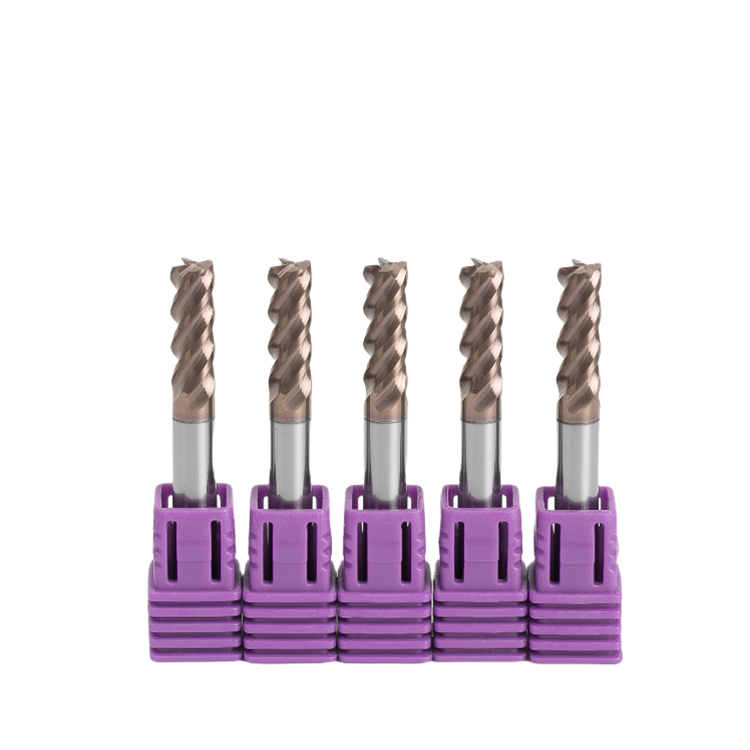Introduction to the Application Fields and Operating Procedures of U-Groove Cutters
In the expansive world of machining and precision engineering, the U-groove cutter stands out as a versatile and indispensable tool. Its unique design and cutting capabilities make it suitable for a wide array of applications across various industries. This article will delve into the specific application fields of U-groove cutters and provide a detailed overview of their operating procedures, highlighting their significance and benefits in modern manufacturing processes.

Application Fields of U-Groove Cutters
1. Automotive IndustryThe automotive industry extensively uses U-groove cutters in the production of key components such as engine blocks, transmission parts, and brake systems. The precision and efficiency of U-groove cutters make them ideal for creating intricate grooves and channels necessary for fluid dynamics and mechanical fit.
2. Aerospace IndustryIn the aerospace sector, U-groove cutters are vital for manufacturing critical components like turbine blades, structural airframe parts, and landing gear. The ability to machine high-strength materials like titanium and nickel-based alloys with precision makes U-groove cutters essential for ensuring the safety and performance of aerospace components.
3. Electronics and Semiconductor IndustryMiniaturization and precision are paramount in the electronics and semiconductor industry. U-groove cutters are used to create intricate grooves and channels in circuit boards, connectors, and other electronic components. Their ability to produce fine, precise cuts ensures the functionality and reliability of electronic devices.
4. Medical Device ManufacturingThe medical device industry requires the highest levels of precision and hygiene. U-groove cutters are employed in the production of surgical instruments, implants, and diagnostic equipment. Their precision allows for the creation of complex geometries and smooth surfaces, which are critical for medical applications.
5. Oil and Gas IndustryIn the oil and gas sector, U-groove cutters are used to manufacture components for drilling equipment, pipelines, and valves. The harsh operating conditions and high demands for reliability necessitate the use of robust and precise cutting tools like U-groove cutters.
6. General Machining and FabricationBeyond specialized industries, U-groove cutters are widely used in general machining and fabrication. They are versatile tools capable of creating grooves, slots, and intricate profiles in various materials, including metals, plastics, and composites. This versatility makes them valuable in job shops and manufacturing facilities for a broad range of tasks.
Operating Procedures of U-Groove Cutters
1. Tool Selection and PreparationChoosing the appropriate U-groove cutter for the specific material and application is crucial. Factors to consider include the material's hardness, the required groove dimensions, and the cutter's geometry. Ensure that the cutter is sharp and free from damage. Proper preparation involves checking the tool holder and machine setup to ensure stability and precision during the cutting process.
2. Workpiece PreparationBefore beginning the machining process, the workpiece must be securely clamped to prevent movement or vibration, which could compromise the quality of the cut. Ensure that the workpiece surface is clean and free from contaminants that could affect the machining process.
3. Setting Up the MachineSet up the machine according to the manufacturer's guidelines and the specific requirements of the U-groove cutter. This includes configuring the cutting speed, feed rate, and depth of cut. Modern CNC machines allow for precise control and repeatability, enhancing the efficiency and accuracy of the machining process.
4. Initial Cut and AdjustmentPerform a trial cut on a test piece or a non-critical area of the workpiece. This initial cut helps verify that the machine settings are correct and that the cutter is performing as expected. Make any necessary adjustments to the cutting parameters to optimize the cutting conditions.
5. Machining ProcessProceed with the actual machining process, ensuring consistent monitoring of the cutter and workpiece. Maintain appropriate cooling and lubrication to prevent overheating and tool wear. The choice of coolant or lubricant depends on the material being machined and the cutter specifications.
6. Quality Control and InspectionAfter completing the cutting operation, thoroughly inspect the grooves or channels for dimensional accuracy, surface finish, and any signs of tool wear or damage. Use precision measuring instruments such as calipers, micrometers, and profilometers to verify the quality of the machined features.
7. Tool Maintenance and StorageProper maintenance and storage of U-groove cutters are essential for prolonging their lifespan and ensuring consistent performance. Clean the cutters thoroughly after use to remove any residual material or coolant. Store the cutters in a dry, secure location to prevent damage and corrosion.
8. Documentation and RecordsMaintaining detailed records of the machining process, including tool selection, machine settings, and inspection results, is beneficial for future reference and quality control. This documentation helps in troubleshooting issues and optimizing the machining process for similar applications in the future.
Conclusion
U-groove cutters play a crucial role in various industries, offering precision and efficiency in creating intricate grooves and channels. Their application spans from the automotive and aerospace sectors to electronics, medical devices, and general machining. Understanding the operating procedures, from tool selection and workpiece preparation to quality control and maintenance, ensures that these versatile tools deliver optimal performance and reliability. As technology and manufacturing techniques continue to advance, the role of U-groove cutters in achieving high-quality, precision-engineered components will only become more significant.


















